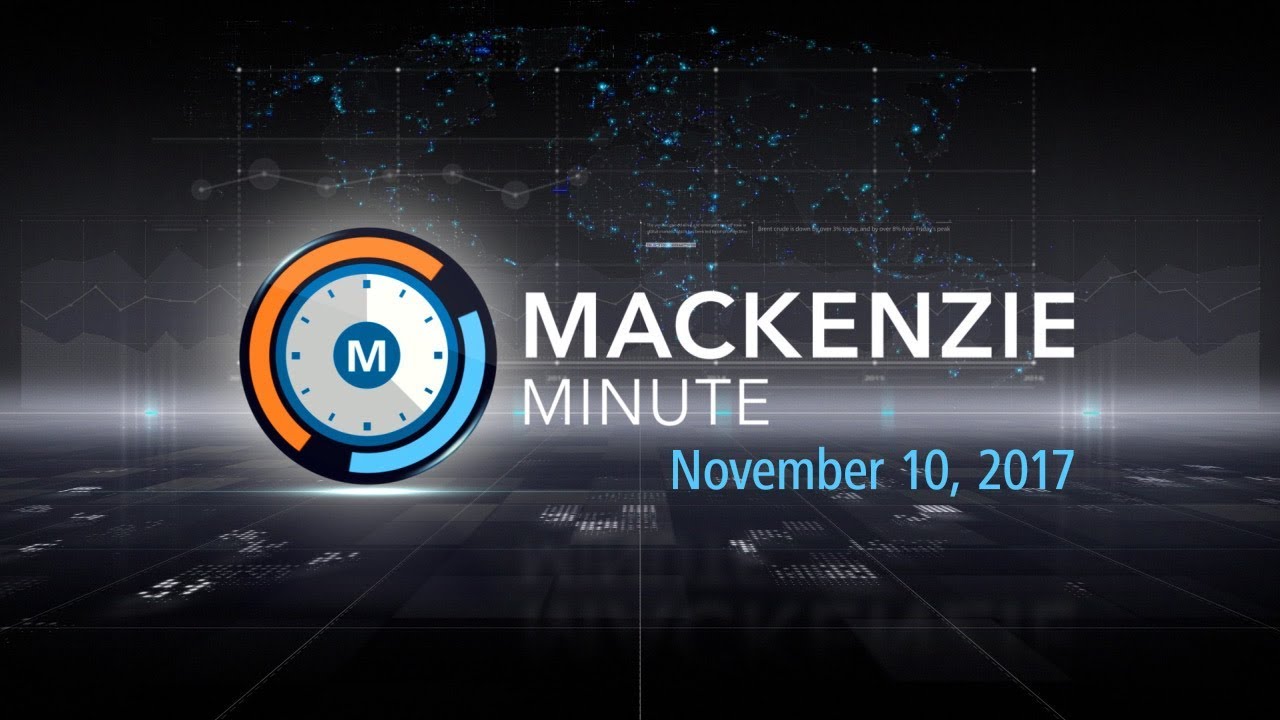by Scott Krisiloff, CIO, Avondale Asset Management
Each week we read dozens of transcripts from earnings calls and presentations as part of our investment process. Below is a weekly post which contains some of the most important quotes about the economy and industry trends from those transcripts. Click here to receive these posts weekly via email.
The macro story continues to be an industrial boom. There was also some focus on tax reform this week. I thought that the more interesting quotes were outside of the macro section though. I’d highlight a few areas of interest:
–Public markets are shrinking and private markets are growing
–Used car prices have stabilized
–Loyalty programs are an antidote to price transparency
–Higher deductibles have led to lower healthcare spending
The Macro Outlook:
The industrial economy has broad based momentum
“If I look at all of my end markets, if I look at all the key markets I serve, for oil and gas to powered to chemical to pharmaceutical, the mining – even mining is doing well for us right now… We’re seeing a pretty good momentum” —Emerson (Industrial)
Are companies ready to invest in new capacity?
“we are continuing to see good business environment for our products worldwide…Our inventories at Microchip as well as the distributors are towards the low end of our normal range. We are continuing to slowly add incremental capacity at various bottlenecks.” —Microchip (Semiconductors)
There have been false starts before
“I’m cautiously optimistic. I mean I’ve been bitten over the last five quarters on certain things continuing to be shifted right on the schedule. But this does kind of give us some optimism that the trough is the trough and we’re starting to come out of it.” —Fluor (Engineering & Construction)
But there could also be a feeding frenzy
“I’ve not seen the markets this low for this long in my career. And I do think that there is going to be a bit of a feeding frenzy with some of these projects that need to go forward if these companies are going to make the kind of numbers that they’re suggesting.” —Fluor (Engineering & Construction)
New investment could propel the industrial cycle into 2019
“I fundamentally believe the recovery is going to spread out over two years. I think the recovery is going to be spread out over 2018 and 2019….I fundamentally don’t believe the bigger projects will start happening…until late 2018 early 2019. ” —Emerson (Industrial)
Is the service economy booming in the same way?
“one of the questions we get often today, given the GDP numbers of the last two quarters, the optimism in the market, people ask, are you seeing more healthy demand today from your corporate customers than a year ago for example, and I think, generally, we would say no, it’s about the same. It feels to us like the economy is growing at more or less the same pace it was before” —Marriott (Hotels)
A lot of optimism has been contingent on political changes
“I believe a good portion of the reason for why the economy has gotten better is regulatory relief and there’s going to be more to come” —Wilbur Ross (Commerce Secretary)
But not much has happened yet
“we’re a year in and the situation, interestingly enough, is probably a bit more cautious on the political front because I think there is a point of view that a lot of those policies, other than things that can be done by executive order, haven’t come to – haven’t really made progress yet.” —Sotheby’s (Art Broker)
It’s not clear if tax reform will happen at all
“we’re not going to be brave enough to forecast an estimated tax rate for next year, yet.” —Moody’s (Credit Ratings)
Even if it does, will it boost earnings as much as expected?
“on tax reform, most of our income is domestic, so we’re not anticipating a whole lot of change, certainly in our book tax rate. Obviously, it’s a little higher, so that would go down a little bit. But then we’ve got to factor in what happens with state deductions or not. So we’re going to monitor this closely. We don’t think it’s again going to be a huge driver one way or the other for our cash flow or our GAAP earnings” —CBS (Television)
Some will be negatively impacted
“The thing that in the short term would likely have the greatest impact would be the repeal of 1031, the ability to do like-kind exchanges for art, which in the long term is a mild negative for the market…there is material activity at the high end of the market using 1031.” —Sotheby’s (Art Broker)
“the interest deductibility cap first of all should have essentially no impact on the investment grade sector, and should not have a significant impact for the higher rated portion of the speculative grade sector. So, it’s real, when you get more deeply into speculative grade that those was caps may make a difference.” —Moody’s (Credit Ratings)
It probably doesn’t move the needle on investment decisions
“If you wave a wand and say tax reform is done, and our tax – cash taxes and book taxes decline by a certain amount, I don’t think that, by itself, is going to change our capital availability, if you will. I think, the longer-term question would be whether or not that has the impact of reducing our cost of capital, which could – in some respects could go into a calculation about whether or not there are investments that make sense for us to do. But I think that’s a longer term, more theoretical question” —Marriott (Hotels)
International:
Britain will have to adjust to Brexit
“In the short term, without question, if we have materially less access (to the EU’s single market) than we have now, this economy is going to need to reorient and during that period of time it will weigh on growth.” —Mark Carney (BOE)
Negative interest rates have not impacted bank profitability
“We have also seen little evidence that negative interest rates are undermining bank profitability…In fact, net interest income has remained quite stable over the past two years, even as overnight rates have drifted lower.” —Mario Draghi (ECB)
Financials:
Public markets are shrinking
“if you go back and you look at the data, you’ll see that there are a lot fewer listed companies in the U.S. today than they were in years past and the size of those companies continues to get larger…the middle market size business is…not looking to do an IPO…I think in the past one of the main drivers of why you would go IPO was because you could oftentimes get a better valuation in the public markets than you could get in the private. But I think as has been widely reported, valuations on the private sale transactions have crept up over the years and so today the discount between a private sale and a public exit are really not necessarily all that significant. And so that’s the broader trend that I think is going on in the middle market, is that these companies are simply moving more to private equity ownership and away from public ownership” —Goldman Sachs BDC (BDC)
Private markets are growing
“we’re seeing new buyers coming in the market at lower price points, who are really interested in collecting, very interested in this both intellectual and somewhat financial exercise in their lives, and there’s no stemming the tide of people coming in…both in terms of the amount of collecting activity that we’re seeing and in terms of the number and range of artist that collectors are enthusiastically pursuing, we see an increase.” —Sotheby’s (Art Broker)
“There’s a lot of money on the sidelines for transactions in the U.S., particularly in the areas of industrial and multifamily…we’re having trouble keeping the buyers that we work with satisfied with the amount of product we’re delivering…It’s still a healthy market out there, and we’ve had nice growth in our investment sales business around the world.” —CBRE (CRE Broker)
That is making those markets more efficient
“the market is getting smarter and more efficient about finding its own level for different things. So there’s a sort of certain knowability or range of what particular work of art or markets are worth. And that’s helpful. It’s speeding up deals and probably increasing the flow of capital in the market because it’s smarter and more efficient.” —Sotheby’s (Art Broker)
Consumer:
Consumer debt is growing
“In the broader environment, the economy remains healthy with growth in GDP and continued low unemployment. At the same time, consumer debt levels have continued to increase as credit supply has returned to the market and losses have risen from their post-recession lows.” —Lendingclub (P2P Lending)
Loyalty programs are an antidote to radical price transparency
“we live in a world with radical transparency in pricing, where prices are available for essentially every hotel at an instant notice. We are doing everything we can. I mean, obviously, the core platform for us is the loyalty program…And that’s a powerful thing. Obviously, some of these other booking platforms are not conducive to loyalty members, because they will not earn points associated with them.” —Marriott (Hotels)
Technology:
Apple’s service business is the size of a Fortune 100 company
“In fiscal 2017, we reached $30 billion, making our Services business already the size of a Fortune 100 company.” —Apple (Technology)
Healthcare:
Patients are making different choices because of high deductibles
“there’s no doubt we continue to see a very soft volume environment…The fact is, consumers are making different choices with higher copays and deductibles” —Tenet (Hospitals)
Industrials:
Used car markets have stabilized
“the used car market stabilized compared to the first half of the year…residual values have really stabilized.” —Avis (Rental Car)
Materials, Energy:
Oil markets appear to be rebalancing
“we’re, I think, certainly encouraged by the improving market conditions as we look forward. The market, obviously, is continuing to rebalance nicely. Inventories are moving towards the five-year average, and we are watching the market closely for opportunities.” —EOG (Oil & Gas)
Oil service capacity is narrowing
“you mentioned pinch point, and pinch point would probably be in just thinking about the various services that are available. There’s been little equipment added over the last couple of years. And that’s one of the main reasons that we’ve increased our activity here with the additional 25 wells; it’s just to ensure that we have top-tier services available” —EOG (Oil & Gas)
Production companies could start producing free cash flow again
“The good news is…the price movement has gotten very constructive lately. And we…can see a price now where we could actually have some free cash flow next year pretty soon” —Apache (Oil & Gas)
Full transcripts can be found at www.seekingalpha.com
Copyright © Avondale Asset Management
















